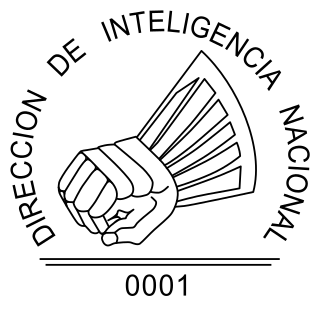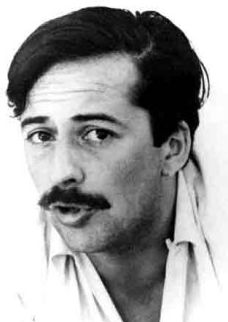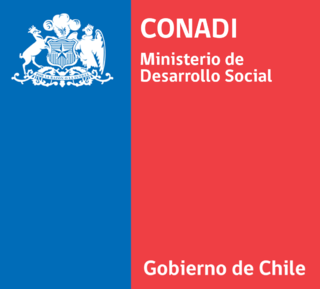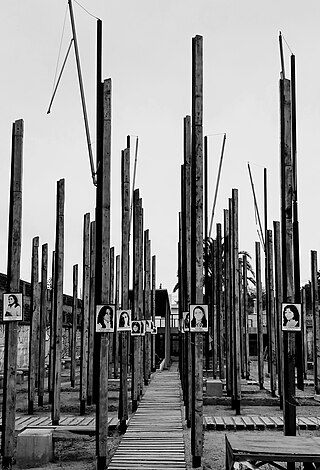
The Shining Path, officially the Communist Party of Peru, is a far-left political party and guerrilla group in Peru, following Marxism–Leninism–Maoism and Gonzalo Thought. Academics often refer to the group as the Communist Party of Peru – Shining Path to distinguish it from other communist parties in Peru.

The Dirección de Inteligencia Nacional or DINA was the secret police of Chile during the dictatorship of Augusto Pinochet. The DINA has been referred to as "Pinochet's Gestapo". Established in November 1973 as a Chilean Army intelligence unit headed by Colonel Manuel Contreras and vice-director Raúl Iturriaga, the DINA was then separated from the army and made an independent administrative unit in June 1974 under the auspices of Decree 521. The DINA existed until 1977, after which it was renamed the Central Nacional de Informaciones or CNI.

Miguel Humberto Enríquez Espinosa was a physician and a founder of the Chilean Marxist-Leninist urban guerrilla Movement of the Revolutionary Left (MIR), founded in 1965. He was General Secretary of the MIR between 1967 and his death in 1974.
The Valech Report, officially known as The National Commission on Political Imprisonment and Torture Report, documents instances of abuses committed in Chile between 1973 and 1990 by agents of Augusto Pinochet's military regime. Published on November 29, 2004, the report presents the findings of a six-month investigation. A revised version was subsequently released on June 1, 2005. In February 2010, the commission was reopened for a period of eighteen months, during which additional cases were examined.

Elizardo Sánchez Santa Cruz-Pacheco is a former philosophy professor at the University of Havana, president of the Cuban Commission for National Reconciliation and Human Rights (CCDHRN), a human rights organisation founded in 1987 whose work has been recognized internationally by receiving the Human Rights Watch prize in 1991 and the Human Rights Prize of the French Republic in 1996.

José "Pepe" Zalaquett Daher was a Chilean lawyer, renowned for his work in the defence of human rights during the de facto regime that governed Chile under General Augusto Pinochet from 1973 to 1990.
Butalmapu or Fütalmapu is the name in Mapudungun for "great land", which were one of the great confederations wherein the Mapuche people organized themselves in case of war. These confederations corresponded to the great geographic areas inhabited by the Mapuches in Chile.
The third annual Altazor Awards took place on March 25, 2002, at the Museo Nacional de Bellas Artes.

Human rights abuses in Chile under Augusto Pinochet were the crimes against humanity, persecution of opponents, political repression, and state terrorism committed by the Chilean Armed Forces, members of Carabineros de Chile and civil repressive agents members of a secret police, during the military dictatorship of Chile under General Augusto Pinochet from 1973 to 1990.
Following the 1973 Chilean coup d'état, an armed leftist resistance movement against Augusto Pinochet's dictatorship developed until 1990 when democracy was restored. This conflict was part of the South American theater in the Cold War, with the United States backing the Chilean military and the Soviet Union backing the guerrillas. The main armed resistance groups of the period were the Revolutionary Left Movement (MIR) and Frente Patriótico Manuel Rodríguez (FPMR), the armed wing of the Communist Party of Chile. These groups had a long-standing rivalry, including over Marxist orthodoxy and its implementation.

Arnoldo Camu Veloso was a Chilean lawyer and socialist political activist. He was a member of the Political Bureau of the Socialist Party of Chile. Camu was killed in the street, allegedly by Chilean government agents shortly following the 1973 Chilean coup d'état. He had been hiding since 11 September and was 36 years old during the incident.

The National Corporation for Indigenous Development, or Corporación Nacional de Desarrollo Indígena (CONADI') in Spanish, is a Chilean institution founded on September 28, 1993, by the "Ley Indigena 19253".

The Venda Sexy is an estate near Santiago, Chile that was used as a torture center by the DINA secret police during the military dictatorship of Augusto Pinochet.

Londres 38 is a building that was used by the National Intelligence Directorate (DINA) as a detention and torture center for opponents of Augusto Pinochet's dictatorship. The facility is located in downtown Santiago, Chile, and was known in DINA's jargon by the code name Yucatán.
Jorge Hernán Müller Silva, a Chilean cinematographer, and his girlfriend, Carmen Cecilia Bueno Cifuentes, a Chilean actress and filmmaker, were left activists from the Revolutionary Left Movement (MIR) who were detained on 29 November 1974 by security police during the military dictatorship of Augusto Pinochet. While held in Villa Grimaldi, it is believed that they both were subjected to torture. Their fate remains unknown.
Pascuala Rosado (1954-1996) was a Peruvian community leader from the district of Huaycán. She was killed by Shining Path in 1996. She had recently returned to Peru after spending several years abroad due to death threats. She was first targeted by Shining Path in 1992, after President Alberto Fujimori visited Huaycán to celebrate the formation of a new civilian anti-crime force. At the time Rosado was Huaycán's highest elected official. Rosado's murder was discussed in the final report of the Peruvian Truth and Reconciliation Commission.
Cuartel Simón Bolívar was a facility used by the National Intelligence Directorate (DINA), Chile's secret police during Augusto Pinochet's dictatorship. It functioned as a detention and torture center aimed at eliminating opponents through disappearance and extermination tactics. Located in the La Reina commune of Santiago, this facility was operated by a subgroup within DINA known as Brigade Lautaro.

The José Domingo Cañas Memory House was a detention and torture center operated by the National Intelligence Directorate (DINA), located at 1367 José Domingo Cañas Street, in the Ñuñoa district of Santiago, Chile.

Disappeared Detainees is the term commonly used in Latin American countries to refer to the victims of kidnappings, usually taken to clandestine detention and torture centers, and crimes of forced disappearance, committed by various authoritarian military dictatorships during the 1970s and 1980s, and officially recognized, among others, by the governments of Argentina (1984) and Chile (1991).














